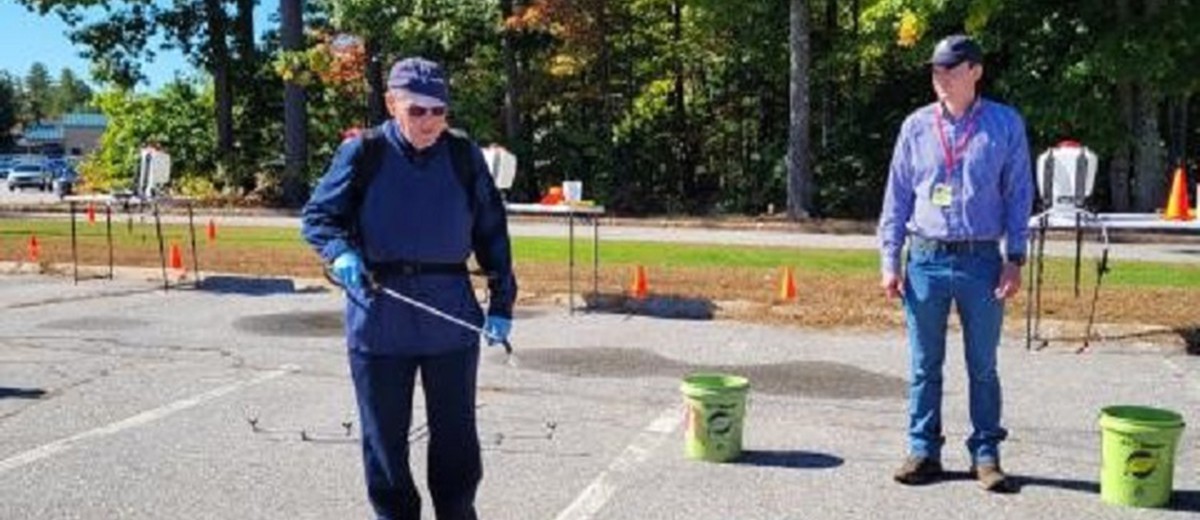Acing the Test on Pesticide Safety Education
Pesticide safety education plays a crucial role in promoting responsible pesticide use and mitigating potential risks to human and non-target animal health, the environment, and sustainability efforts.
February is National Pesticide Safety Education month and PestSure wants pest control industry professionals to be aware of the significant value of ongoing pesticide safety training. Offering and participating in pesticide safety training provides applicators with the knowledge and skills necessary to handle pesticides safely. By understanding proper handling, storage, application, and disposal procedures, technicians can minimize the risk of accidental exposure, poisoning, or environmental contamination.
Continuous education and training opportunities in pesticide safety enhance the competency and professionalism of technicians. By staying informed about emerging trends, best practices, and advancements in pesticide technology, technicians can improve their effectiveness, efficiency, and job performance.
Pesticide safety education also promotes environmentally responsible practices that minimize accidental pesticide spills and drift, reducing the risk of contamination to soil, water, and non-target organisms.
Avoiding Pesticide Exposure
Common pesticide exposures for technicians include product drifting in the wind during application, rubbing your face with product on your hands or gloves, product splash during mixing or filling, leaks in sprayers, pressure releases from clogged hoses, or crawling through product residue in an attic or crawlspace. In each case, an injury can be the result. Often the exposure causes skin, eye, or respiratory irritation.
Another common denominator for product exposure is that most incidents are avoidable with proper work methods including the proper use of personal protective equipment (PPE). Consistent use of proper PPE and protective clothing will greatly reduce the potential risk of pesticide absorption.
Tips to avoid drift contact:
- Wear PPE and clothing to protect yourself from any potential product drift.
- Adjust your nozzle(s) and pressure appropriately, so they are less likely to drift with the wind.
- Try to remain upwind during application.
- Apply product during calm weather conditions. High winds increase the risk of drifting.
- Read product labels and SDS carefully for application instructions.
- Use your knowledge of the site and the application equipment to keep the product on target.
Tips to avoid splash contact:
- Before mixing or filling, put on PPE (coveralls, gloves, eye protection, and respirator if the label indicates).
- Mix outdoors when possible or where there is good ventilation and light.
- When handling concentrated material, keep the container below eye level to avoid splashing into your face.
Tips to prevent contaminating yourself:
- Do not eat or drink while working with product and not until you have washed with soap and water.
- Avoid wiping your face with your shirtsleeves or gloved hands.
- Do not carry cigarettes or any consumables in your pockets.
- Always store pesticides in properly labeled containers.
- Wear your respirator when needed. If you are unsure if you need a respirator, ask your supervisor.
Pressure release of chemicals typically occurs when we have malfunctioning sprayer equipment or when cleaning out clogged nozzles and screens. When exposure occurs from leaking product, it is often from a backpack sprayer. Whenever product contacts clothing and skin, remove soaked clothing immediately and wash the skin promptly with soap and water.
Eye tissue is particularly sensitive and absorbent, which means getting pesticides in the eyes is an immediate threat. If pesticides get in your eyes, follow the first aid instructions on the SDS and label and immediately flush your eyes with clean water for at least 15 minutes.
There are four ways that pesticides can enter the body: through the skin, the mouth, the nose, and the eyes.
Pesticides can enter your body in solid, liquid, or gaseous form. Remember that highly concentrated chemicals present the greatest danger. If not washed off immediately, the liquid concentrates can penetrate your unbroken skin. The longer a pesticide remains on your skin or in your eyes, or the longer you inhale it, the greater your chance of injury.
PestSure – Your Partner in Safety
Founded in 1980, PestSure is the only insurance and risk management provider that is 100 percent dedicated to the pest management industry. It offers industry professionals a full suite of insurance, risk management, and safety training and education offerings.
PestSure provides insurance, safety and risk management consulting to pest management companies representing $2 billion in revenue, $750 million in payroll and more than 16,500 service vehicles. The program is administered by Alliant Insurance Services.
Call 888.984.3813 or visit our contact page for more information.
When you subscribe to the blog, we will send you an e-mail when there are new updates on the site so you wouldn't miss them.



Comments